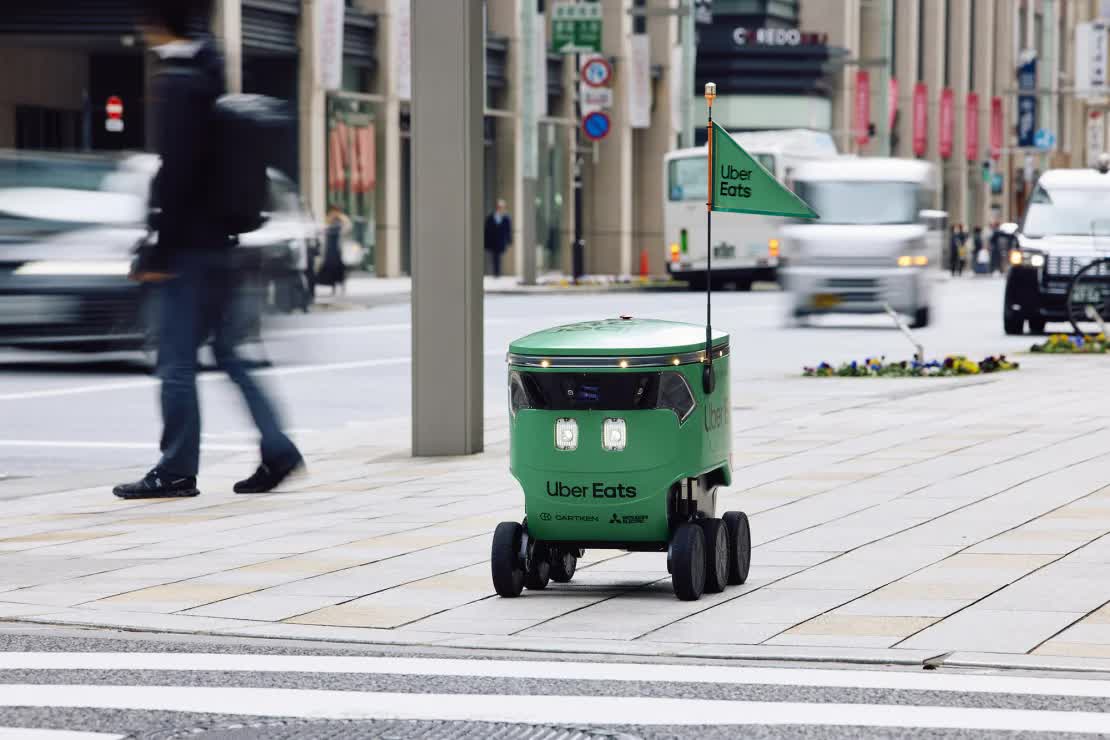‘Shipper Robot’ Revolutionizes Delivery in Japan

In a bid to combat the labor shortage in Japan, Uber Eats has introduced self-driving robots for delivery in certain areas of Tokyo. The pilot project aims to enhance the efficiency of the service amidst the country’s labor scarcity.
New Era of Delivery
The autonomous robots are currently being utilized by two select establishments in the Nihonbashi district of Tokyo – Tonkatsu Aoki and Benihana Annex. Uber Eats hopes to expand the usage to more areas in the near future. These robots operate from 10 am to 5 pm on weekdays, ensuring continuous delivery.
Japan is the second country in the world to incorporate Uber Eats’ robot delivery service, which was initially launched in the United States in 2022.
How it Works
Once an order is placed on the Uber Eats app, the robot arrives at the designated restaurant to collect the items. It then proceeds to the customer’s provided address. Upon arrival, the customer can use the app’s key access feature to retrieve their order. Shintaro Nakagawa, the head of Uber Eats Japan, expressed in a press release:
“Given Japan’s labor shortage, we believe that self-driving robots will play a crucial role in expanding delivery options.”
The robots used by Uber Eats are supplied by Cartken, a technology company, and have been modified by Mitsubishi Electric specifically for use in Japan. These robots are equipped with artificial intelligence, enabling them to navigate autonomously as well as be remotely operated.
The Features
The robots are capable of a maximum speed of 5.4 km/h, slightly below the regulated limit of 6 km/h for small remote-controlled vehicles according to Japanese traffic laws. These box-shaped, six-wheeled robots measure 71 cm in length, 46 cm in width, and 60 cm in height. Their cargo compartments have a maximum capacity of 27 liters or 20 kg, with insulation to maintain the appropriate temperature for food items until delivery.
To navigate pedestrian walkways, the robots employ cameras and are designed to avoid obstacles, yield to pedestrians, and stop at traffic lights. The cameras automatically blur the faces of individuals caught in the footage to protect their privacy.
Future Prospects
Mitsubishi Electrics, in collaboration with Uber Eats, aspires to further innovate the delivery process, enabling the robots to operate inside buildings as well. Shoji Tanaka, the head of Mitsubishi Electrics’ Innovation Center, stated:
“This partnership represents a leap forward in redefining the future of food delivery, making it more accessible and sustainable for consumers in Japan.”
Shintaro Nakagawa, CEO of Uber Eats Japan, believes that the robot delivery system will continue to evolve, offering customers and partner restaurants “exciting surprises and high reliability.”
Meanwhile, Mitsubishi Electrics’ Tanaka affirmed the company’s commitment to develop autonomous delivery robots that can eventually navigate indoors.

Addressing Japan’s Challenges
Japan, once the world’s third-largest economy but recently overtaken by Germany, has been grappling with an aging population and a dwindling workforce for several years. This has put immense strain on the country’s logistics infrastructure.
Shoji Tanaka, Senior Executive Officer of the Advanced Application Development Center at Mitsubishi Electrics, stated that robot delivery services are “considered an effective response to an impending logistics crisis.”
Tanaka added that Mitsubishi has partnered with Cartken to “address such social issues.”
He further expressed, “We hope this newly announced initiative will serve as a catalyst for the widespread adoption of robot delivery services in Japan. In the future, we will collaborate with buildings and factory infrastructure, which are among our strengths, to enable autonomous robots to work within various locations.”
The introduction of self-driving robots in the delivery industry marks a significant step toward streamlining operations and ensuring convenience and efficiency for consumers in Japan.
Source: CNN
